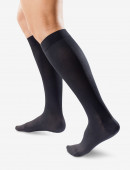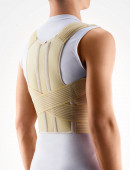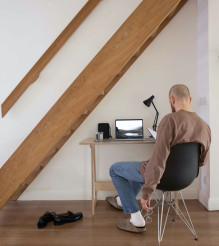The cold season of the year mostly comes with both higher utility costs and extra focus and resources to be devoted to your health.
The cold season of the year mostly comes with both higher utility costs and extra focus and resources to be devoted to your health. It's not only viruses that can show up in the form of a sneezing neighbour or colleague.; one might become weary of various other health issues typical of the cold season or even due to the quite uncomfortable weather.
There are still various guesses as to the underlying cause of the increasing number of people complaining of back pain in the winter. Scientists and health care providers discuss multiple options, and they have not come to an unequivocal answer. However, one thing is clear: in practice, the number of complaints increases during winter.
One explanation is that low temperatures cause muscle tendons and ligaments to tighten throughout the entire body, especially around the spine. As a result, painful inflammation can develop in the lumbar area, which significantly limits movements and flexibility. In addition, the cold weather reduces the blood flow in the body, which causes the body to become stiff. That results in additional stress and may lead to an increase in injuries.
In the coldest months of the year, both men and women increasingly turn to health care specialists, complaining of back pain, although they might have not had any complaints during the other seasons of the year. Cold weather often provokes new, or aggravates existing back pain.
Builders, warehouse workers or others that often do physical work in the cold and draft, will most likely list the discomfort caused by such working conditions.
However, when conditions are less extreme, many people are unfortunately not always aware that temperature and weather can seriously affect our health.
What can you do to protect your back from the adverse effects of cold weather?
- You should try to keep it warm by wearing suitable clothing. When going outside, make sure the back and neck are not exposed and the cold air does not reach unprotected areas of the body.
- The indoor temperature should be set to a comfortable and pleasant level. If this is not possible, you should think about additional ways to find comfort. Be it special heated blankets, warm socks or warming back belts. The use of the belt has a beneficial effect on the internal organs by gently supporting and improving blood microcirculation. They are also recommended for anyone working in conditions that involve prolonged strain in the lumbar and sacral area of the spine, or those who are working in cold rooms and drafts.
- Exercise can contribute to improved blood circulation. Even a few minutes a day are enough to warm up the body and activate blood circulation. Exercise will help with muscle training and will keep you generally fit.
- Be careful with seasonal activities and entertainment. Clearing snow and ice, building snowmen and sledding must be done carefully to avoid injury or frostbite.
Despite such a wide variety of situations, the most universal advice that will work for everyone is to try to keep yourself warm, healthy and active, not ignoring the signs that indicate being underprepared for cold conditions. If the body is warm and feels cosy and comfortable, the human mind will be cheerful and happy, and there will be no room for depressing, upsetting thoughts that come uninvited during the gloomy and cold months of the year. Warmth and cosiness will have a generally beneficial effect on both mental and physical health, thus making waiting for spring and the first sunshine much easier and pleasant. And luckily, nature gives us sunshine free of charge.









